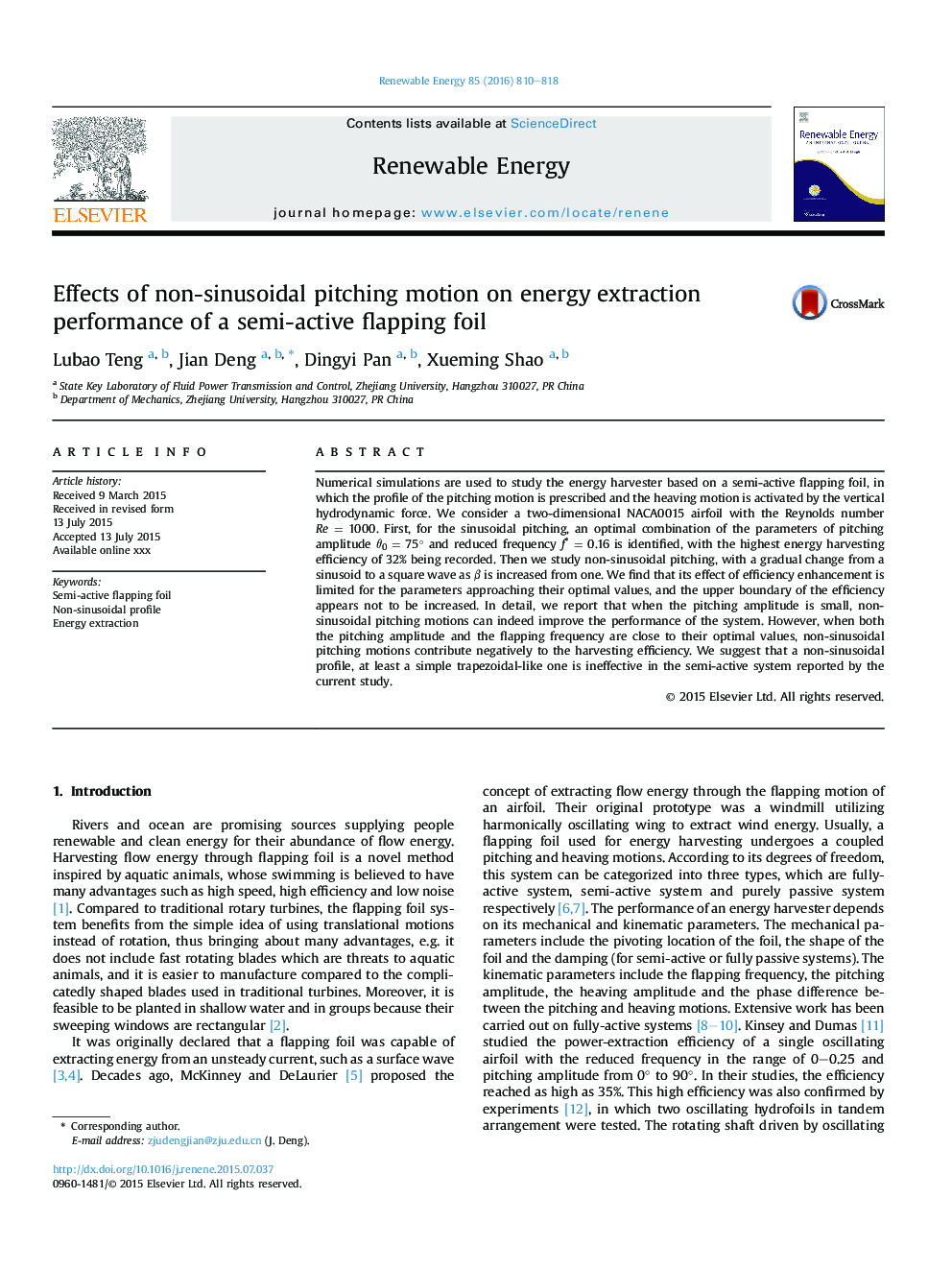| Article ID | Journal | Published Year | Pages | File Type |
|---|---|---|---|---|
| 6766879 | Renewable Energy | 2016 | 9 Pages |
Abstract
Numerical simulations are used to study the energy harvester based on a semi-active flapping foil, in which the profile of the pitching motion is prescribed and the heaving motion is activated by the vertical hydrodynamic force. We consider a two-dimensional NACA0015 airfoil with the Reynolds number Re = 1000. First, for the sinusoidal pitching, an optimal combination of the parameters of pitching amplitude θ0 = 75° and reduced frequency fâ = 0.16 is identified, with the highest energy harvesting efficiency of 32% being recorded. Then we study non-sinusoidal pitching, with a gradual change from a sinusoid to a square wave as β is increased from one. We find that its effect of efficiency enhancement is limited for the parameters approaching their optimal values, and the upper boundary of the efficiency appears not to be increased. In detail, we report that when the pitching amplitude is small, non-sinusoidal pitching motions can indeed improve the performance of the system. However, when both the pitching amplitude and the flapping frequency are close to their optimal values, non-sinusoidal pitching motions contribute negatively to the harvesting efficiency. We suggest that a non-sinusoidal profile, at least a simple trapezoidal-like one is ineffective in the semi-active system reported by the current study.
Keywords
Related Topics
Physical Sciences and Engineering
Energy
Renewable Energy, Sustainability and the Environment
Authors
Lubao Teng, Jian Deng, Dingyi Pan, Xueming Shao,
